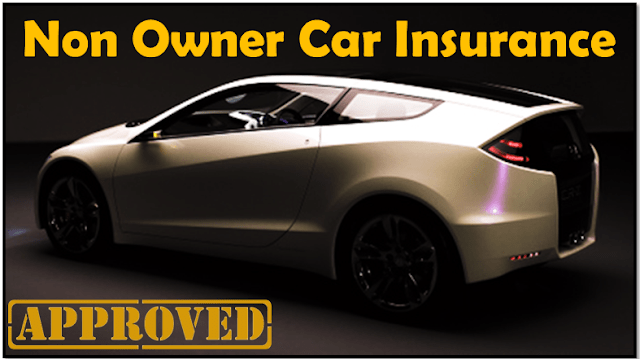5 Best Coverage Options for Non-Owner Insurance
If you're considering non-owner insurance, understanding your coverage options is vital. You might not realize that liability coverage for bodily injury and property damage can protect you from significant financial responsibilities. Similarly, medical payments coverage can ease the burden of unexpected medical expenses. But that's just the beginning. There are other essential coverages that can safeguard your driving experience. Let's explore these options further.
Key Takeaways
- Liability coverage for bodily injury and property damage is essential for drivers of vehicles they don't own, protecting against financial responsibilities.
- Medical payments coverage pays for medical expenses after an accident, regardless of fault, making it useful for states without PIP.
- Uninsured and underinsured motorist coverage protects against accidents involving uninsured drivers, covering bodily injury and property damage.
- Rental car coverage options can include Collision Damage Waiver, which may be waived if personal insurance covers damages.
- Gap coverage helps cover the difference between what is owed on a vehicle and its depreciated value in case of theft or total loss.
Liability Coverage for Bodily Injury and Property Damage

Liability coverage for bodily injury and property damage is essential for those who drive vehicles they don't own, providing a safety net in case of accidents. This coverage protects you from financial responsibilities if you cause injury to others or damage their property while driving a borrowed vehicle.
It typically includes bodily injury liability, which covers medical expenses for injured parties, and property damage liability, which pays for damage to others' vehicles. Non-owner insurance acts as secondary coverage, supplementing the vehicle's primary insurance. It's particularly beneficial for frequent car borrowers or those needing insurance for legal compliance. Confirm your policy meets state requirements, as this can help you avoid penalties and maintain continuous coverage. Additionally, having non-owner insurance ensures that you are protected against potential lawsuits from accidents, giving you greater peace of mind while driving. Having this type of insurance can also help you understand your financial responsibilities in case of an accident.
Medical Payments Coverage
When you're behind the wheel of a borrowed vehicle, having the right coverage can make all the difference. Medical payments coverage is an optional component that helps pay for medical expenses after an accident, regardless of who's at fault.
It covers costs like doctor visits, hospital stays, and even funeral expenses in some cases. This coverage is particularly useful in states without personal injury protection (PIP). You can choose limits ranging from $1,000 to $10,000, which should ideally match your health insurance deductibles.
Uninsured and Underinsured Motorist Coverage
While driving, you face the risk of encountering uninsured or underinsured motorists, making it essential to understand the importance of uninsured and underinsured motorist coverage.
Uninsured motorist coverage protects you in accidents with drivers lacking insurance, which is vital since nearly 13% of U.S. drivers are uninsured. This coverage often includes bodily injury and property damage components and can cover hit-and-run incidents.
On the other hand, underinsured motorist coverage kicks in when the at-fault driver's insurance isn't enough to cover your expenses. Requirements for these coverages vary by state, with some mandating them while others leave it as an option.
Without this coverage, you risk significant financial burdens in the event of an accident.
Rental Car Coverage

Understanding your insurance options is essential not just for personal vehicles but also when renting a car.
When renting, you'll encounter various coverage choices like the Collision Damage Waiver (CDW), which you can often waive if your personal insurance covers extensive and collision.
Keep in mind that standard rental car insurance typically excludes liability for damages to others. Your credit card might offer either primary or secondary coverage for damages, so it's wise to verify your benefits.
Standard rental car insurance often doesn't cover damage liability. Check your credit card for potential coverage options.
Additionally, consider purchasing extra coverage for medical expenses or personal property protection if needed.
Always confirm your personal insurance terms to avoid surprises, especially regarding deductibles and exclusions related to business use.
Gap Coverage for Driving Privileges
Gap coverage for driving privileges serves as a crucial financial safety net for vehicle owners who may face significant losses in the event of theft or total loss.
If your vehicle is financed or leased, gap insurance covers the difference between what you owe and the car's depreciated value, preventing financial strain. It's especially beneficial for those with low down payments or extended financing terms, where the loan balance can exceed the vehicle's worth.
Typically, gap insurance is offered by insurers, costing between $20-$40 annually when bundled with your policy.
Consider purchasing it if your vehicle is new or you're concerned about rapid depreciation. This coverage can safeguard you from owing more than the actual cash value of your car.
Conclusion
In conclusion, choosing the right non-owner insurance coverage is essential for protecting yourself on the road. With over 13% of drivers uninsured in the U.S., having uninsured and underinsured motorist coverage can be a lifesaver. It guarantees you're safeguarded against financial burdens from accidents with those lacking sufficient insurance. By considering these five key options—liability, medical payments, rental car, and gap coverage—you can drive with confidence and peace of mind.
